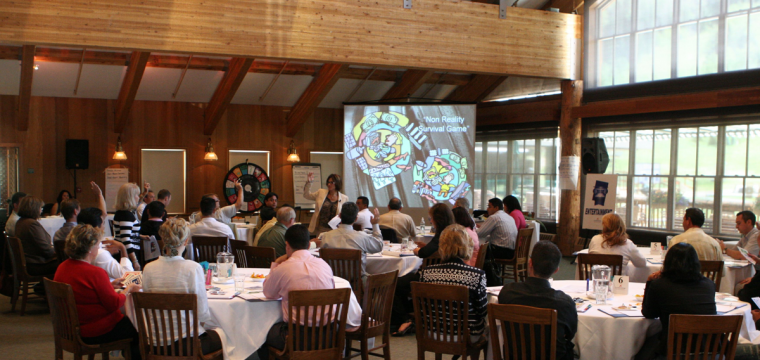“Four score and seven years ago…”
“I have a dream!”
“Give me liberty or give me death!”
Famous words once spoken by these memorable speakers have served to inspire, motivate and unite an entire nation. When you speak in front of a group – whether it’s to give a sales presentation, as an expert on a panel, or delivering a keynote speech – you need to draw your audience in by appealing to their emotions and motivations.
Follow these seven strategies for an unforgettable presentation and your message will not only enhance the lives of your listeners, but will be a timeless reminder of your contribution.
1) Preparation
The biggest mistake speakers make is focusing too much time on what we want to say and not enough time on what the audience needs to hear. Think a moment; take time. Ponder the theme of your presentation. Ask yourself, who is in my audience? What’s the set up of the room? What three key points do I want them to take home? If I were to sum up the message of my speech in a single phrase or on a bumper sticker, what would it say? This may be the only chance you ever have to meet these people; what lasting impression do you want to leave?
2) The Primacy and Recency Effect: First and Last Impressions are Critical
A famous study preformed by Solomon Asch concluded that people make an impression within seconds of listening to you, and form a lasting impression based on your concluding remarks. Consider the following for an impactful opening and/or ending to your presentation:
• Use a quote, anecdote or joke (if you have to ask yourself if a joke is appropriate, it isn’t)
• Start by quoting an interesting or amazing statistic
• Begin or end with a poignant or interactive game or group exercise
3) Entertain Your Audience
With the average attention span waning and the thirst for multimedia increasing, entertaining an audience is key to connecting with them. Entertainment is best achieved through utilization of the five senses. Therefore consider the following:
• Handouts (essential)
• PowerPoint
• Music
• Video clips
• Physical activity or movement
4) Use of Metaphors, Stories and Analogies
The creative use of stories, metaphors and analogies not only entertains and delights our audience; it enables them to better learn and remember. A presentation without stories and analogies is like an opera without music. You’ll get the plot, but miss the feeling.
5) Involve Your Audience
[Tweet “The speeches and seminars with the highest ratings usually have the most group involvement.”] People learn more by doing and seeing than by listening. Audience participation may include: questions and answers, situation simulations, and/or simply pick-a-partner exercises; be creative.
I remember I was asked to speak on the subject of third party testimonials to a sales team who had no doubt been taught this subject on a weekly basis over the last 10 years. Considering the team consisted of 26 veterans and five new hires, I recoiled at the thought of boring them with yet another one-dimensional auditory presentation. Instead we decided to have a scavenger hunt. I broke the sales group into teams of six and instructed each of them to either go out on the property or contact previous owners and bring back to the group the following:
• One third party story glorifying usage of the product with friends or relatives;
• A testimonial regarding a good customer service experience, and;
• A trinket or a photo from one of their family trips. (This could be an email picture).
An hour later, all five teams came back red faced and excited. They were energized and enthused. Their new stories quickly became part of their repertoire.
6) Set the Tone
Remember effective communication is only 7% verbal. It is 33% tonality and 60% body language. Think about your voice inflection. Where do you want to emphasize certain key points? What facial expressions or body movements will add to the impact of your speech? It’s a good idea to watch a comedian or other great orator to gain valuable communication ideas.
7) Listening Tips
According to a recent NPR interview, Harvard professor Nancy Koehn maintains the average attention span in 2013 was about eight seconds. This means, even if we’re interested in the subject matter, our minds wander at least every eight seconds! In other words, in a 60-minute talk, participants are thinking about what they’re going to eat for lunch, who will babysit Saturday night and did they forget to pay the utility bill… if they’re interested. Therefore, our ability to keep the audience engrossed is paramount.
It’s a great honor to be invited to present. We maximize our presentations when we first consider exactly what message or messages we want our audience to perceive. These seven strategies will help in getting those messages internalized in their everyday lives. As Steven Covey put it, “Begin with the end in mind.”
So the next time you’re preparing a presentation, ask not what your audience can do for you, but rather what you can do for your audience!
